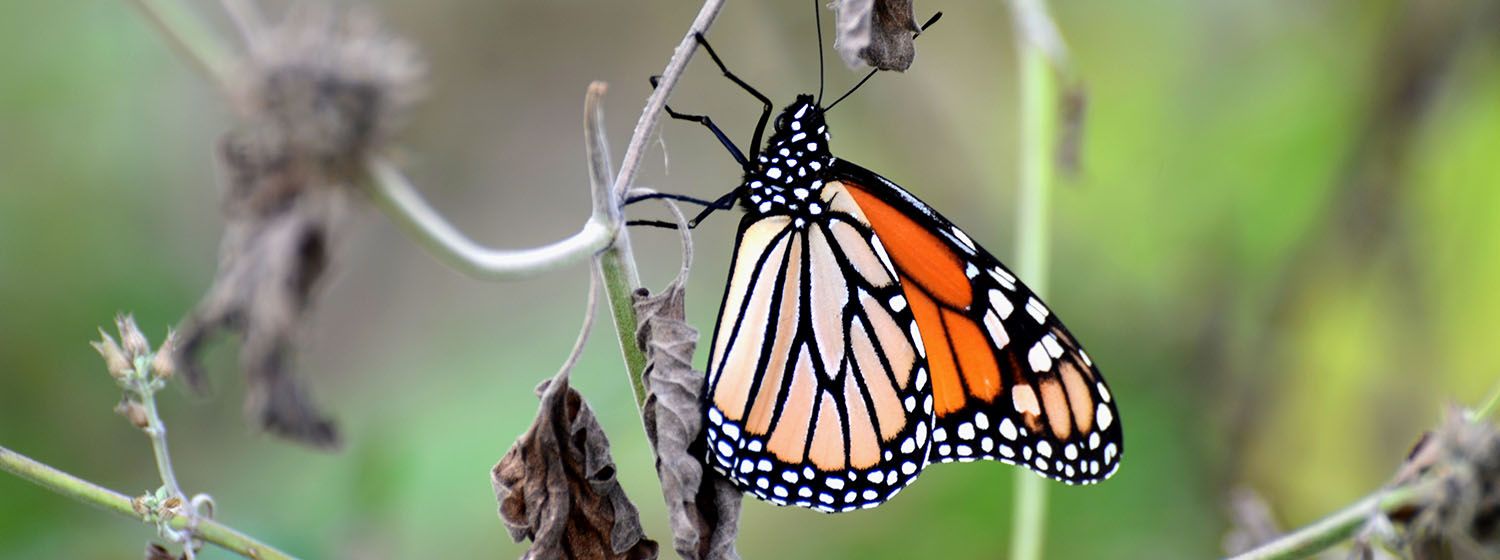A great number of organizations and communities throughout North America have dedicated significant effort toward conserving Monarch butterfly (Danaus plexippus) habitat in recent years in an effort to counter drastic population declines (approximately - 90%) over the past two decades. This butterfly is dependent upon milkweed plants (Asclepias spp.) to reach its adult stage and is unique as it migrates from southern Mexico to southern Canada using successive generations in the spring and a reproductive pause in the fall. The Monarch is so widespread and recognizable that most people have childhood memories of seeing the butterfly and watching it metamorphose. The large size and striking pattern has endeared this species as an American icon and is easily one of the most recognized species of insect in the United States. While there are a multitude of factors driving recent declines the major issue on the summering grounds is the introduction of a certain herbicide that was introduced in the 1990s and 2000s for various crops that could finally remove milkweed from crop fields. This excluded milkweeds from crop fields, but also nearby roadsides. Prior to this new product Monarchs were buffered from the massive loss of native prairie by the milkweeds that thrived in crop fields, hay fields, and roadsides. These problems are compounded in years when winter storms kill off many Monarchs and so the most drastic declines in the past few decades are likely a result of the combination of these two factors. The biggest problem on the wintering ground involves the logging of Oyamel firs (Abies religiosa) as well as bark beetles which is putting the delicate ecosystem that shelters Monarchs throughout the winter in jeopardy.
Throughout 2016 the Crane Trust participated in a workshop with over 60 stakeholders involving Monarch and pollinators hosted by Nebraska Game and Parks to create the Nebraska Monarch and Pollinator Initiative the Monarch and Pollinator Plan for the state. These efforts reflect the close relationship we have with pollinators and also how dear Monarchs are to our communities. The Crane Trust is participating in long-term monitoring efforts to understand how the Monarchs presence changes in central Nebraska due to climate, weather, land management, and habitat. We typically participate in Monarch Watch’s citizen science programs including Monarch tagging, counts, and questionnaires. Additionally, we strive to ensure all restorations hold appropriate seed banks to create Monarch habitat, and manage our lands to increase native diversity of plants, birds, and pollinators alike. This includes participating in and promoting habitat certification programs such as the Monarch Waystation program, or showcasing the different types of plantings that can be done in urban or rural settings to assist pollinators throughout their lifecycles. Please visit the Nature and Visitor Center to view the many kinds of habitat that can be of use for Monarchs. If you’re interested in viewing Monarchs, visit us in September when the prairie explodes in yellow from the blooms of sunflowers and goldenrods that tend to peak alongside the Monarch migration south.
KC King and Andrew Caven

